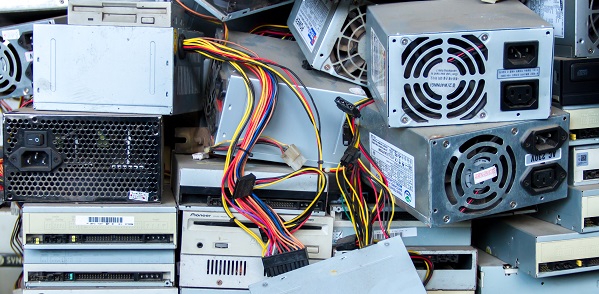
Electronic waste – usually called “e-waste” – refers to any and all electric or electronic items needing to be disposed of. This can include – but certainly is not limited to – old cell phones, televisions, computer towers or inkjet printers. As technology has continued to advance, so has the amount of e-waste being produced globally with nearly 41 million tons of electronics being tossed each year. Along with the alarmingly large amount of this type of refuse is the problem of how it’s being dealt with.
Where does e-waste go?
A
recent report from the United Nations Environment Program (UNEP) found nearly 90 percent of e-waste is being illegally dumped and traded. Due to the relatively new issue of e-waste disposal, many countries – especially developing ones – do not yet have protocols or laws on the topic in place yet. A growing black market has thus emerged, with illegal traffickers posing as legitimate disposal services and then dumping tons of e-waste in random spots across the developing world. This has led to environmental risks from the internal components of discarded electronics, specifically heavy metals. Here are some of the main ways that different types of e-waste can negatively affect the planet and its inhabitants.
Air Pollution
Many rudimentary e-waste “processing plants” are not ethically run – or safe. For example, some e-waste traffickers burn open computer wires in order to get to the copper inside – a valuable commodity. The open burning can release hydrocarbons into the air, while the chemical stripping of gold-plated computer chips leads to emissions of brominated dioxins and heavy metals. A
recent study of the environmental effects of the largest e-waste landfill in the world in Guiyu, China, found airborne dioxins to be 100 times more prevalent than previously measured.
Water Pollution
Cathode ray tubes, often found in older televisions, video cameras and computer monitors are often broken apart, the yoke removed and the shell dumped. Contents in the shell, such as lead and barium, could leach through the soil and into the ground water of local communities. This endangers not just the people who drink and bathe with this water but also the different species of wildlife that rely on the water to sustain.
Soil Pollution
Another
study of the Guiyu landfill found wind patterns in Southeast China disperse toxic particles across the Pearl River Delta Region. The area, which contains a population of 45 million, is at-risk due to the toxins entering the “soil-crop-food pathway,” which is one of the most common ways that heavy metals enter the human body.
Information Security
In addition to being a risk to the environment, e-waste also poses a potential security threat to both individuals and businesses. If a hard drive is not properly erased before it’s thrown away, it can be opened, potentially putting sensitive information in the hands of the wrong people. Credit card numbers, financial data and bank account information can all be obtained by those trained to do so. There is a large organized crime ring in Ghana specifically dedicated to searching through discarded computer drives for data.
Human Exploitation
According to
the Borgen Report, there are an estimated 29.8 million people living in slavery across the globe. There are even more people who submit themselves to dangerous and grueling work for a demeaning wage, as it may be the only work available. Since 90 percent of e-waste is illegally traded, there are many criminals worldwide benefiting from the stripping and processing of e-waste by poorer laborers. These workers are without rights, as they are exposed to hazardous materials on a daily basis. Some may also be intimidated into working long hours, putting them at even more risk.
What is being done about the risks posed by e-waste?
Because of the alarming rates at which e-waste is being illegally and dangerously dealt with, many international government bodies have promised action. Once the UNEP presented its report in front of the United Nations, a call-to-action was immediately suggested. Unilateral talks between the United States, the European Union and other countries have been scheduled in order to cooperatively deal with this emerging global crisis. Here at home, many legislators are pushing for stricter e-waste policies.
How do I dispose of e-waste safely and ethically?
There are many ways to properly reuse or recycle electronic devices – and it is not by leaving your junk printer on the curb. The Environmental Protection Agency (EPA) has started a commission to ensure that e-waste is properly dealt with.
Its websiteIts website offers many resources, including lists of recyclers that are
certified to be ethical and environmentally sound. You can also search for different laws or local regulations based on where you live.
Many electronics retailers, such as Best Buy and Staples, also offer opportunities to recycle your e-waste. Depending on where you drop your obsolete devices off at, you may be eligible for tax credits or store coupons. Local communities often have special days dedicated to
collecting citizen’s unwanted e-waste. Keep an eye out in local papers or websites to find out if your town has a program or day like this. You can ethically and sustainably recycle e-waste – just make sure to do your homework first.
